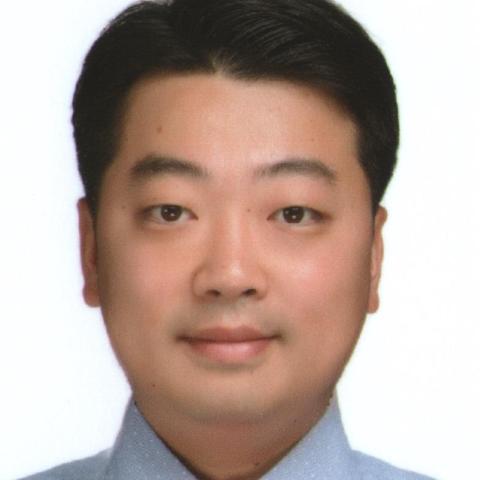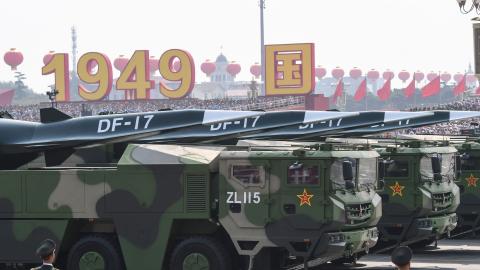Executive Summary
This monograph provides a comprehensive, integrated, and holistic assessment of the nuclear arms control and nonproliferation policies of the People’s Republic of China (PRC). The goal of this study is to assess how to improve China’s implementation of its nonproliferation commitments to better uphold, preserve, and strengthen the rules-based international system. The Russia-Ukraine War has shown how a threat to this order anywhere can readily become a challenge to global rules everywhere. Specifically, this monograph addresses international cooperation on managing critical issues related to China and the Treaty on the Non-Proliferation of Nuclear Weapons (also known as the Nuclear Non-Proliferation Treaty, or NPT): limiting the growth of nuclear forces of the People’s Liberation Army (PLA) and lowering the risk of their use, enhancing Chinese support for curbing horizontal nuclear proliferation to North Korea and Iran, and augmenting China’s contributions to denying non-state actors access to nuclear weapons and technologies.
China, the United Kingdom, and the United States have a special role to play in preventing the proliferation and use of weapons of mass destruction (WMD), especially nuclear weapons, due to the states’ permanent membership on the United Nations Security Council (UNSC), global security engagements, dependence on safe and secure global commerce, substantial nuclear power sectors, and status as three of the five “nuclear weapon states” (NWS) under the NPT. Nonetheless, China’s rapid nuclear modernization poses a severe challenge to the future of global arms control, which aims to enhance stability, mitigate risks, and reduce financial costs. Its buildup reduces strategic predictability, decreases crisis stability, and weakens restraints on further nuclear proliferation.
Though the nuclear capabilities of the PLA are rapidly improving in both quantity and quality, Beijing has declined to join New START or other international legal instruments that would impose verified limits on its nuclear forces. Barring a change in Beijing’s position, the prospects for comprehensive, legally binding arms control look bleak. At best, the future strategic arms control environment might see a patchwork of limited agreements. These would not require ratification as formal treaties or legally binding instruments, but could aim to reduce the risks of miscalculation, remove first-strike vulnerabilities, and decrease the prospects of conflict escalation between great powers. Additional initiatives to increase transparency and mutual understanding in the absence of formal treaties could include regular strategic stability dialogues aimed at addressing potentially destabilizing nuclear doctrines or systems, limiting the proliferation of strategic offensive arms, and eschewing dangerous operational practices.
China’s nuclear buildup, compounded by Russia’s war against Ukraine and North Korea’s unrelenting nuclear missile development programs, threatens further nuclear proliferation. These developments have already challenged US extended nuclear security guarantees in Asia and spurred interest in Japan and especially South Korea in acquiring national nuclear deterrents. Tensions between China and Western countries have also impeded nonproliferation cooperation regarding Iran and North Korea. For example, Beijing has thwarted Western proposals for applying additional nonproliferation sanctions on Iran and North Korea. Though collaboration between China and the West on preventing terrorists and non-state actors from obtaining nuclear weapons continues, the attention and resources that these countries have devoted to this endeavor have been waning since the end of the nuclear security summits in 2018.
The first chapter summarizes China’s current nuclear buildup and general approach to nonproliferation and nuclear security. According to the US Department of Defense, China’s arsenal could grow to 1,500 deliverable nuclear warheads by 2035. For the first time in history, the PLA will soon have a full nuclear triad of long-range strategic delivery vehicles, consisting of land-based intercontinental ballistic missiles (ICBMs), long-range strategic bombers, and a fleet of modern missile-launching submarines (SSBNs) sufficient to keep one boat always on patrol. China is also deploying hypersonic glide vehicles that can rapidly maneuver as they approach targets, making them more difficult to intercept. Despite international calls for greater transparency by Beijing, PRC leaders have resisted making their nuclear capabilities and intentions more transparent. In particular, they have yet to explain the reasons behind their nuclear buildup—or its endpoint.
The first chapter also relates how, though the Chinese government continues to advocate nonproliferation and nuclear security, Beijing’s support for cooperative approaches with Western governments toward those goals has waned in recent years. PRC policymakers publicly oppose Iranian or North Korean possession of nuclear weapons, but the Chinese government has declined to support additional proliferation-related sanctions on either country despite their violation of UNSC resolutions on limiting their nuclear activities (resolutions that Beijing had earlier supported). For these and other proliferation challenges, PRC diplomats insist that dialogue and negotiations, rather than threats and sanctions, are generally most likely to yield “win-win” solutions that address the underlying reasons why states pursue nuclear weapons. They also criticize Western governments for overly restricting the transfer of advanced nuclear technologies to developing countries, pursuing exclusive nuclear-sharing arrangements, and failing to ratify all the protocols associated with regional nuclear-free zones, as well as for the supposed “Cold War mindset” and “double standards” that the United States, United Kingdom, and other Western leaders apply to proliferation issues. China continues to cooperate with other countries on nuclear security, but the transparency of PLA activities in this area has decreased. Further, the rapid growth of China’s nuclear weapons complex raises questions about the security of its sensitive fissile material and technologies.
The second chapter—which covers China’s engagement with Korean nuclear issues and whose primary authors are Youngjun Kim of the Korea National Defense University and Yeseul Woo of King’s College London—demonstrates how China’s nuclear policies complicate the diplomacy of both Korean states. For North Korea, the PLA’s accelerated nuclear buildup has become a double-edged sword. China’s strong military and nuclear power can better shield North Korea (the Democratic People’s Republic of Korea, or DPRK) from US, Japanese, or South Korean aggression. But DPRK leaders fear that Beijing would exploit its enhanced power for leverage or coercion regarding North Korea’s nuclear policies, such as by promoting disarmament. For South Korea, PRC policies impede the resolution of the DPRK nuclear threat, complicate Seoul’s diplomatic balance between Beijing and Washington, and stimulate the South’s interest in pursuing nuclear options.
The third chapter, written by Komei Isozaki, Hudson Institute Japan Chair fellow and visiting scholar at the Institute for National Strategic Studies of the US National Defense University, assesses the complex nuclear relationship among Japan, China, and the United States. The text reviews Japan’s strong commitment to nuclear disarmament despite its reliance on US nuclear guarantees (the “nuclear umbrella”). The chapter highlights how China’s earlier self-restraint in building nuclear weapons underpinned the normalization of Sino-Japanese relations. Isozaki then analyzes how China’s military and nuclear buildup, along with the DPRK’s growing missile capabilities and Russia’s recent aggressive behavior, have transformed Japan’s national security policy. To enhance Japan’s capacity for collective self-defense, Japanese policymakers have made the unprecedented decisions to double the country’s defense budget, upgrade Japan’s conventional strike capabilities, and elevate the Japan-US extended deterrence dialogue. Though Japanese leaders are not seeking an independent nuclear deterrent, they do expect the United States to strengthen its extended security guarantees to Japan. The mounting threat from China and North Korea has also led Japan and South Korea to strengthen their historically difficult relationship.
The fourth chapter reviews China’s policies toward Iran’s nuclear program. Chinese diplomacy has skillfully managed the tensions among its multiple Middle Eastern goals while exploiting differences dividing other countries, including Iran and Western governments. The PRC has participated in international negotiations to limit Iran’s nuclear activities, supported the nuclear deal between Iran and the five permanent UNSC members and Germany (P5+1) in 2015, opposed the US withdrawal from this agreement in 2018 and the subsequent US sanctions on the Iranian government and its partners, and has backed subsequent efforts to restore a version of the 2015 agreement. Though China’s economic ties with Iran remain modest, the PRC would gain economic advantages from sanctions relief but would suffer, at least initially, from a major war in the Middle East. PRC strategists further fear coerced regime change in Tehran, as a radically different Iranian government might turn to alternative partners, attenuating Sino-Iranian ties. The Chinese government has opposed coercive measures designed to compel Iran to roll back its recent nuclear advancements, seemed more willing to accept Iranian nuclear activities than Western governments, exploited the Iranian government’s alienation from the West to strengthen the PRC’s economic and security ties with Tehran, and defended the Iranian regime despite its violations of numerous UNSC resolutions that Beijing had earlier supported.
The fifth chapter analyzes the complex Sino-Russian nuclear partnership, which has waxed and waned over the years. The Soviet Union helped launch the PRC nuclear program—and soon came to regret providing that support. Since the Cold War, Sino-Russian nuclear ties have become stronger; Beijing and Moscow have adopted mutually supportive positions on several arms control and proliferation issues, including Western proliferation-related sanctions, missile defenses, US extended security guarantees, and US and UK nuclear partnerships. PRC and Russian differences with the United States and the United Kingdom regarding Iranian and North Korean nuclear activities have increased in recent years. As Western relations with China and Russia have deteriorated, Beijing and Moscow have become more interested in exacerbating these proliferation-related security problems for Washington and London. Russia is also helping China develop its nuclear reprocessing facilities, which could produce fissile material for more nuclear weapons. The coming years could see Sino-Russian security cooperation extend to nuclear-related exercises and arms sales involving, for example, their strategic delivery systems.
The sixth chapter evaluates how the United States has responded to China’s nuclear policies. For now, the Biden administration, unlike its predecessor, is primarily seeking risk-reduction measures with China rather than treaty-mandated caps on its nuclear forces. Meanwhile, partially to counter the Chinese buildup, the United States is modernizing its nuclear deterrent. The administration, Congress, and the rest of the US national security community are debating what further changes in US arms control and nuclear modernization policies may be needed as the PLA nuclear buildup continues. Though Sino-US nuclear security cooperation persists, it has become less visible in recent years. At the same time, US complaints about China’s lack of transparency regarding its increasing fissile material production have grown.
In the seventh chapter, Maximilian Hoell, who wrote this chapter while a senior policy fellow at the European Leadership Network, reviews German, French, British, and NATO perspectives on China’s nuclear policies. Though European officials have acknowledged risks stemming from their close economic ties with China, they have only engaged in selective “de-risking” of particularly sensitive commercial sectors. German, French, British, and NATO leaders have made speeches expressing concern about China’s nuclear buildup, lack of transparency, and reluctance to engage in dialogue about strategic risk reduction. German nuclear diplomacy regarding China has recently focused on eliciting PRC statements affirming the impermissibility of using nuclear weapons, including in Ukraine. French strategists, though keeping their distance from the China-US confrontation, understand that China’s growing nuclear expansion poses significant challenges to global security, which may require adjustments in France’s nuclear arsenal. The United Kingdom has already decided to increase its nuclear warheads ceiling, partly in response to China’s nuclear buildup and its negative impact on the global security environment. This chapter recognizes that the PRC’s growing nuclear arsenal and assertive foreign policy will likely further undermine Europe’s arms control architecture and decrease US resources available for European contingencies. NATO Secretary General Jens Stoltenberg has made many speeches and media interviews calling for greater Chinese nuclear transparency and restraint, but differences among allies regarding China have impeded NATO’s ability to form a coherent, comprehensive, and arguably effective position toward the PRC.
In conclusion, China’s refusal to join Russia and the United States in negotiating legally binding limits on its nuclear forces is jeopardizing the future of strategic arms control. The United Kingdom can help sustain arms control regimes by pressing Beijing—through bilateral and multilateral channels, such as within the P5 process, an informal discussion group of the NPT-recognized nuclear powers—to participate in arms control negotiations designed to secure verifiable constraints on China’s nuclear inventory. If Western governments more consistently pressed their Chinese counterparts on contested nuclear issues, they might be able to elevate these questions as a priority in PRC decision-making. The United Kingdom could also intensify efforts to engage the PRC in confidence-building and risk-reduction measures. If the PRC relaxes its traditional strategic opacity and shares more information about its nuclear capabilities, intentions, and plans, these measures could entail non-treaty agreements, complementary unilateral actions, strategic dialogues, data exchanges, and limits to dangerous operational practices. UK experts and their partners can also identify measures the PRC could take to improve the security of its own nuclear materials and facilities. Given China’s substantial stake in developing global nuclear power, the PRC may be open to expanding cooperation on nuclear security against non-state actors and on enhancing the safety of nuclear power facilities. China’s expanding exports of nuclear technologies and services make it imperative that Beijing enforces exemplary international safety and security norms, such as using only proliferation-resistant technologies and practices.
This study profits from multiple contributions. Though the authors do not all agree with every point in this monograph, there is broad consensus on key questions. The British government’s Counter-Proliferation and Arms Control Centre generously funded this research. The authors would also like to thank Frederik Brekk, Michael Dressler, Oriet Hemenway, Hansol Kim, Ashley Morford, Anissa Ozbek, Rima Rusnac, Toshi Yoshihara, and Timothy Walton for contributing research, analysis, and insights to this study, which also benefited from the skilled editing of Hannah Skaggs and Mark Melton along with the publication design skills of Ian Maready. Other scholars at King’s College London, the Royal United Services Institute, the Hopkins-Nanjing Center, the Sejong Institute, and Hudson Institute—along with dedicated but unnamed government officials and civil servants—also provided astute comments on earlier versions of this report.























